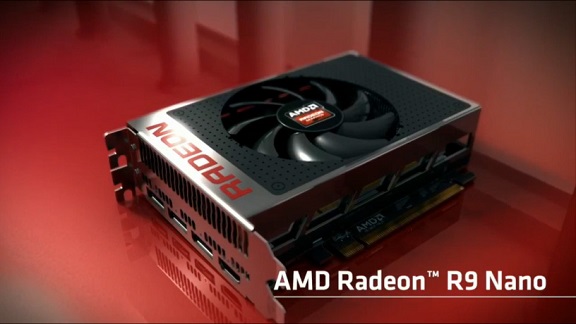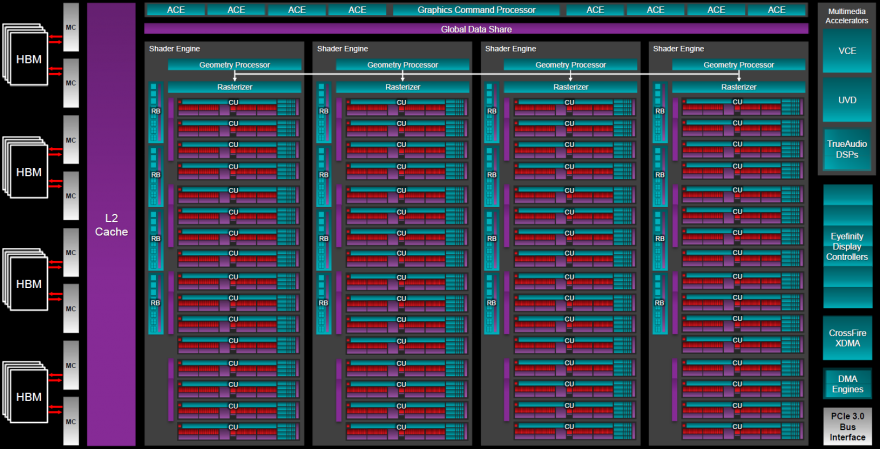Radeon R9 Nano

While the Radeon R9 Fury X was designed for the wealthiest 3D gaming enthusiasts who demand maximum performance and efficient water cooling, the Radeon R9 Fury was made for gamers who want conventional air cooling in the form of various original AMD partner coolers.
The forthcoming Radeon R9 Nano has been specifically designed to provide miniature enthusiasts with the highest 3D performance possible in small form factors.
According to the formal specifications, the Radeon R9 Nano is similar to the Radeon R9 Fury X. Both accelerators are equipped with a fully unlocked Fiji GPU, only the maximum processor frequency in the R9 Nano is 50 MHz lower than in the R9 Fury X. At the same time, the TDP of the two models differs by no less than 100W: 175W for the Nano and 275W for the Fury X.
The total number of stream processors in this model is 4096, like in the older Fury X model. The number of texture units is the same - 256 pieces, as well as the number of geometric units and ROP units - the last ones in the chip are 64 pieces. All currently released video cards based on the Fiji chip have 4 GB of HBM standard memory attached directly to the GPU using a 4096-bit memory bus.
Specifications Radeon Radeon R9 Nano
|
|
||||||
|
Chip
|
||||||
|
Frequencies
|
||||||
|
Memory
|
||||||
|
Interface and TDP
|
The Fiji video chip in the R9 Nano has improved video processing units, etc. In particular, the Unified Video Decoder decoding unit can hardware accelerate the decoding of H.265 (HEVC) video data - the Fiji chip was the first discrete GPU with such capabilities. Among other advantages of Fiji, we note support for TrueAudio, LiquidVR, Mantle, Eyefinity and FreeSync technologies.




